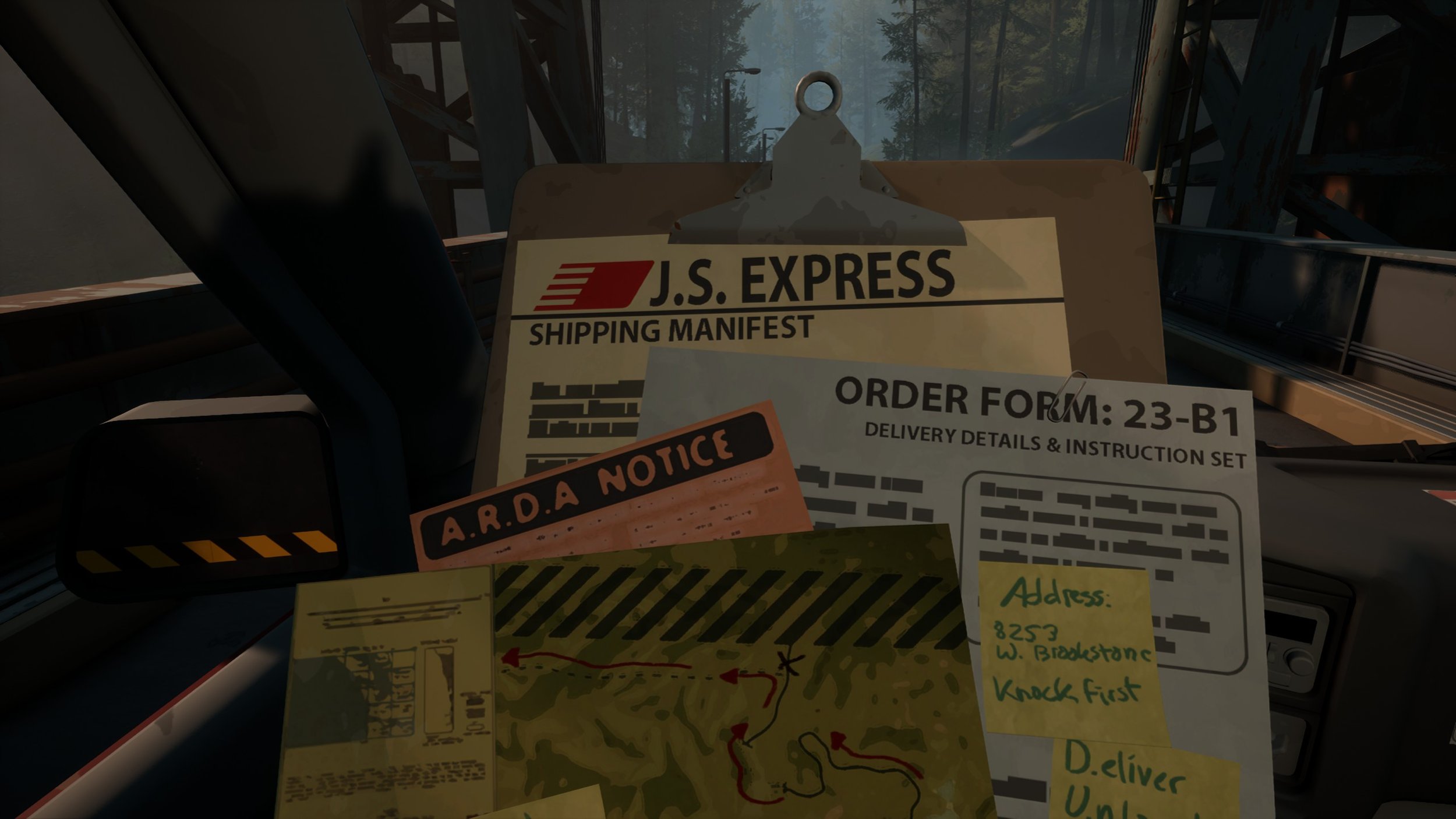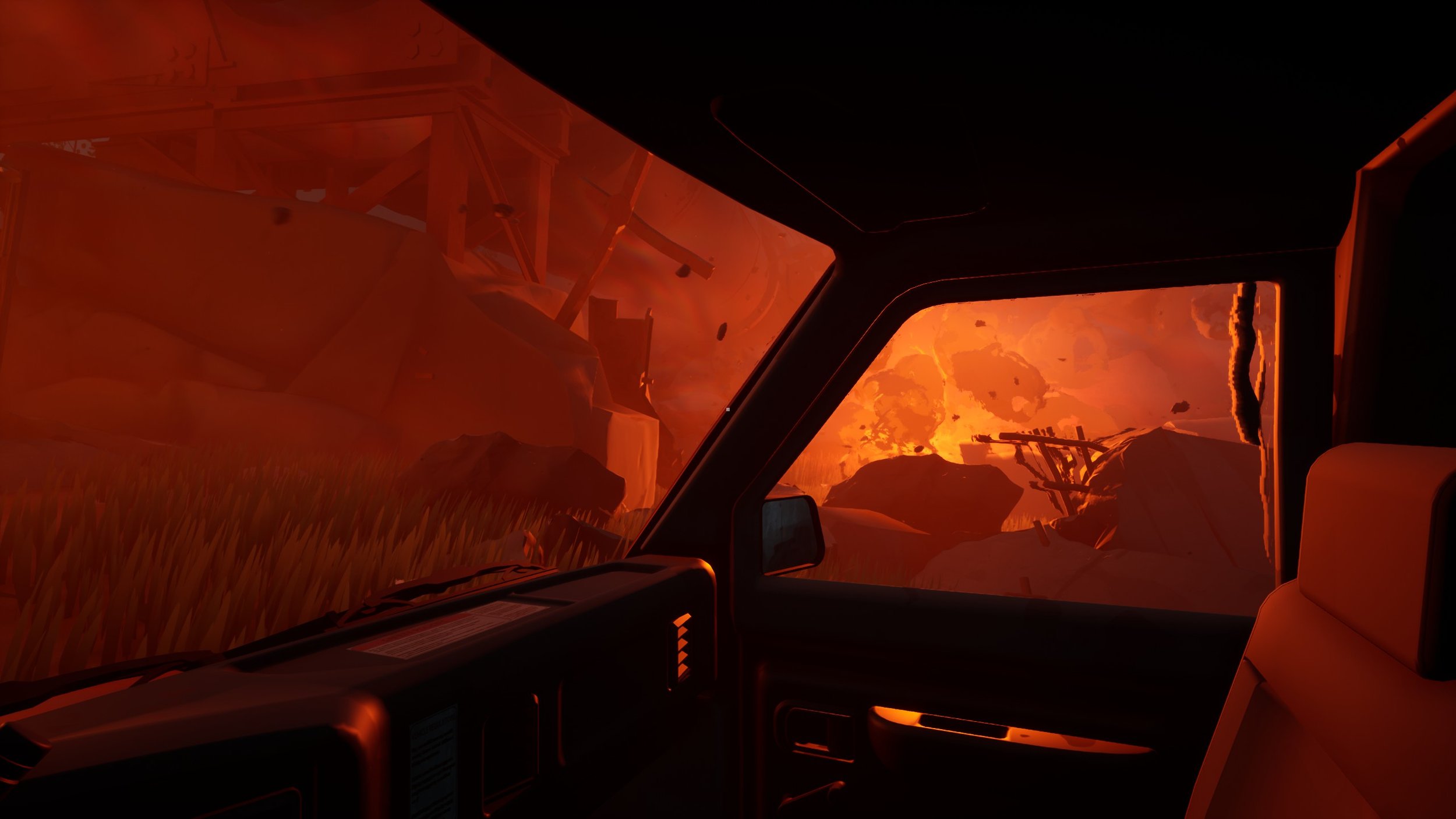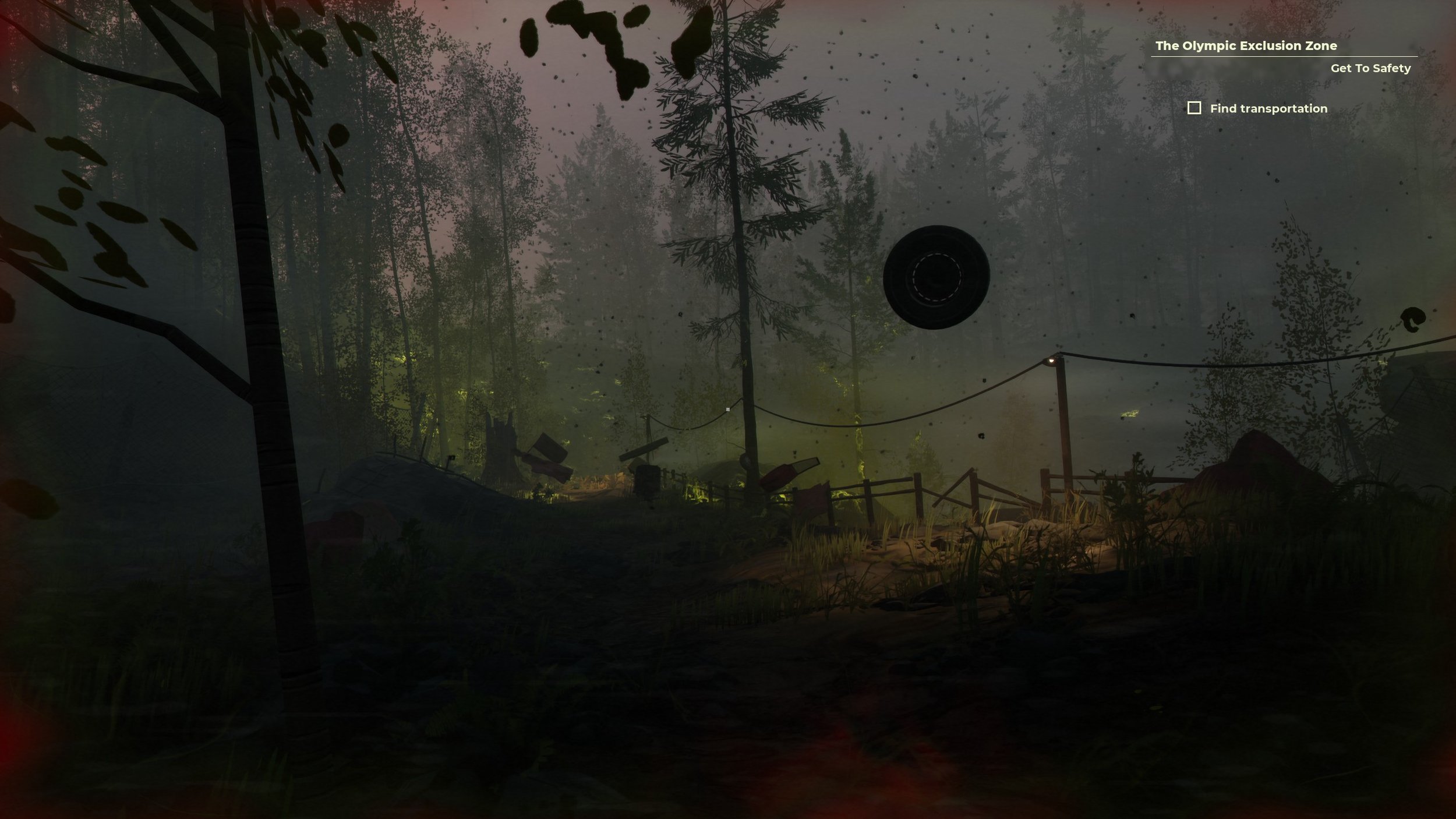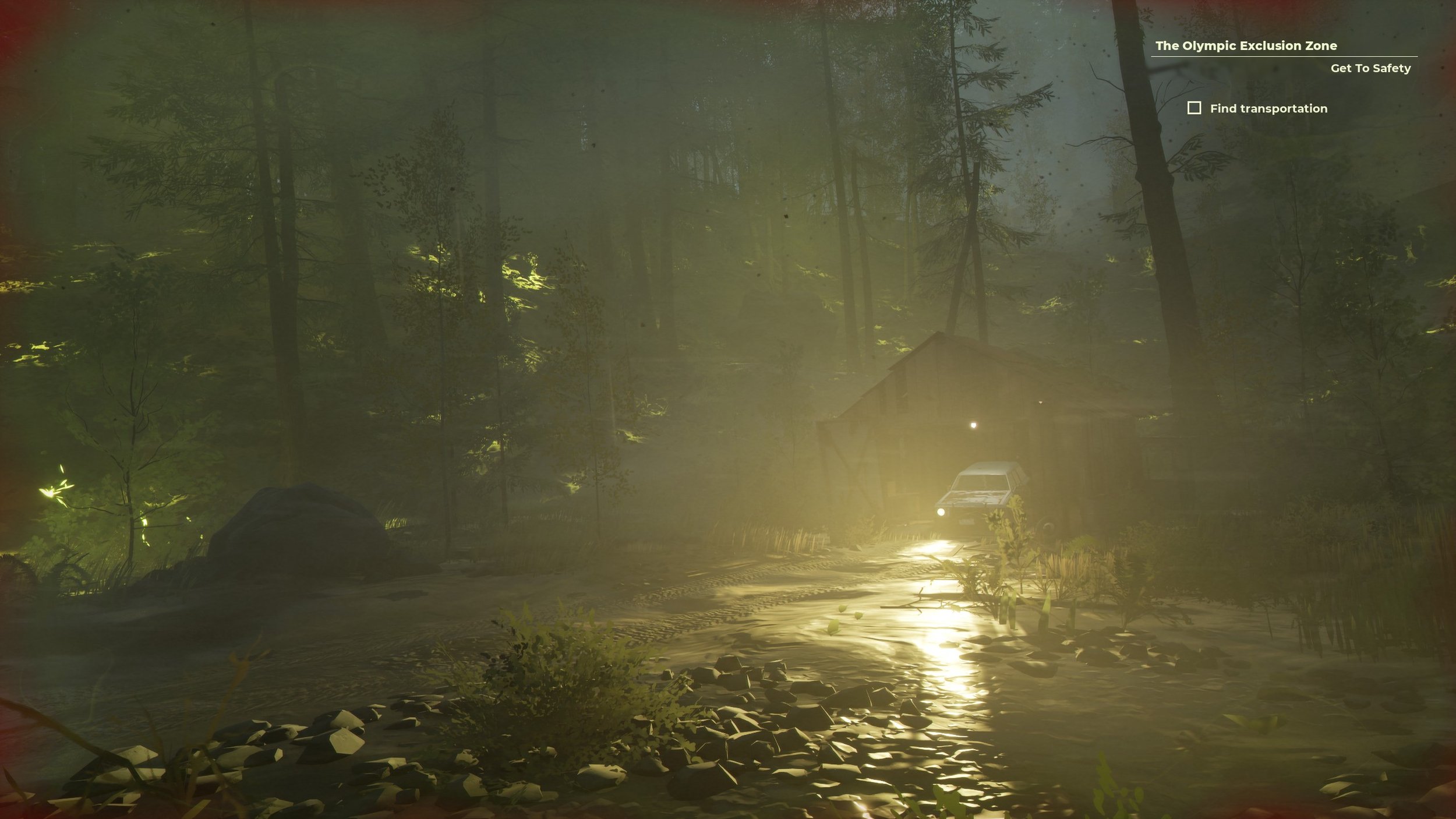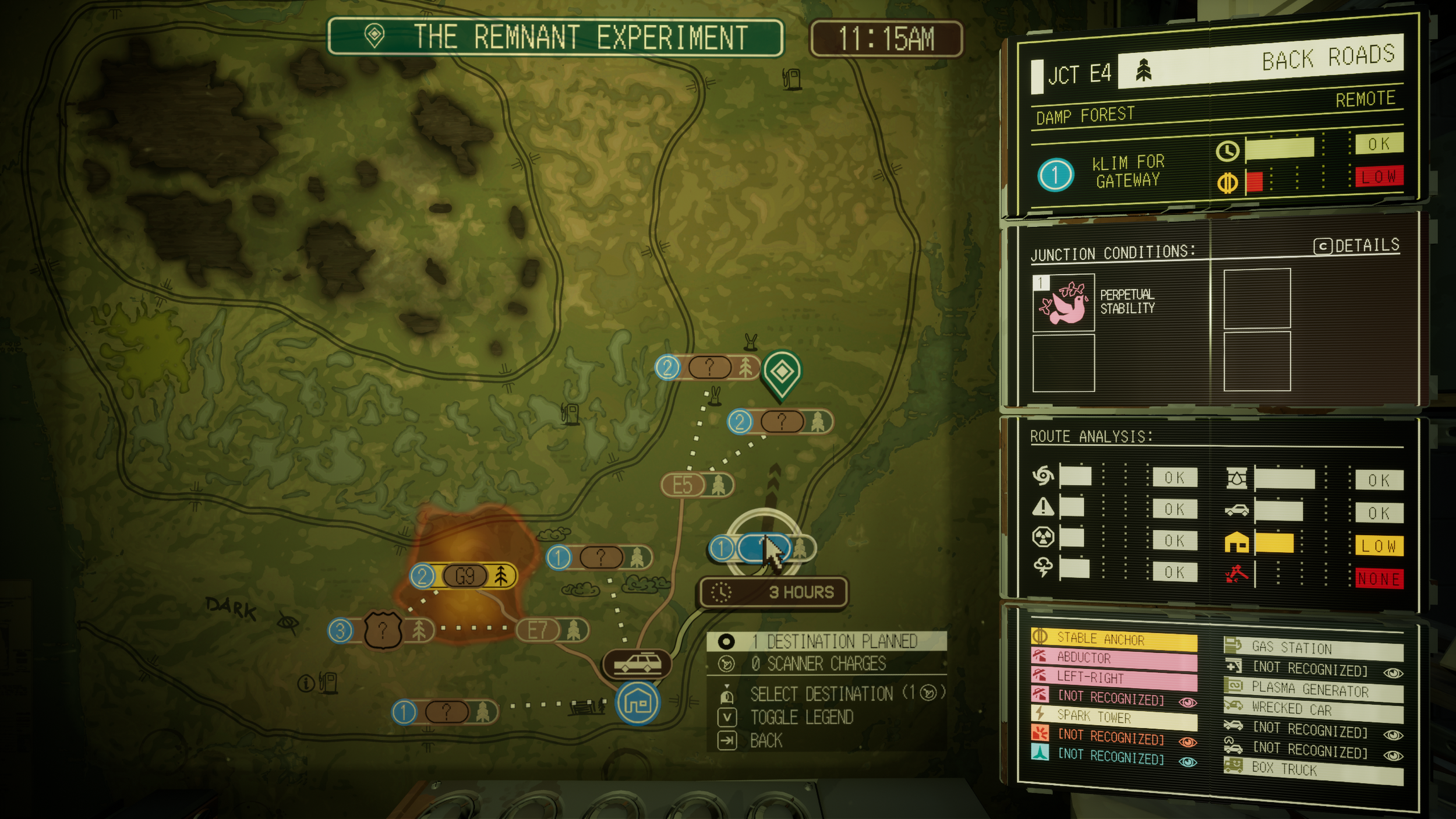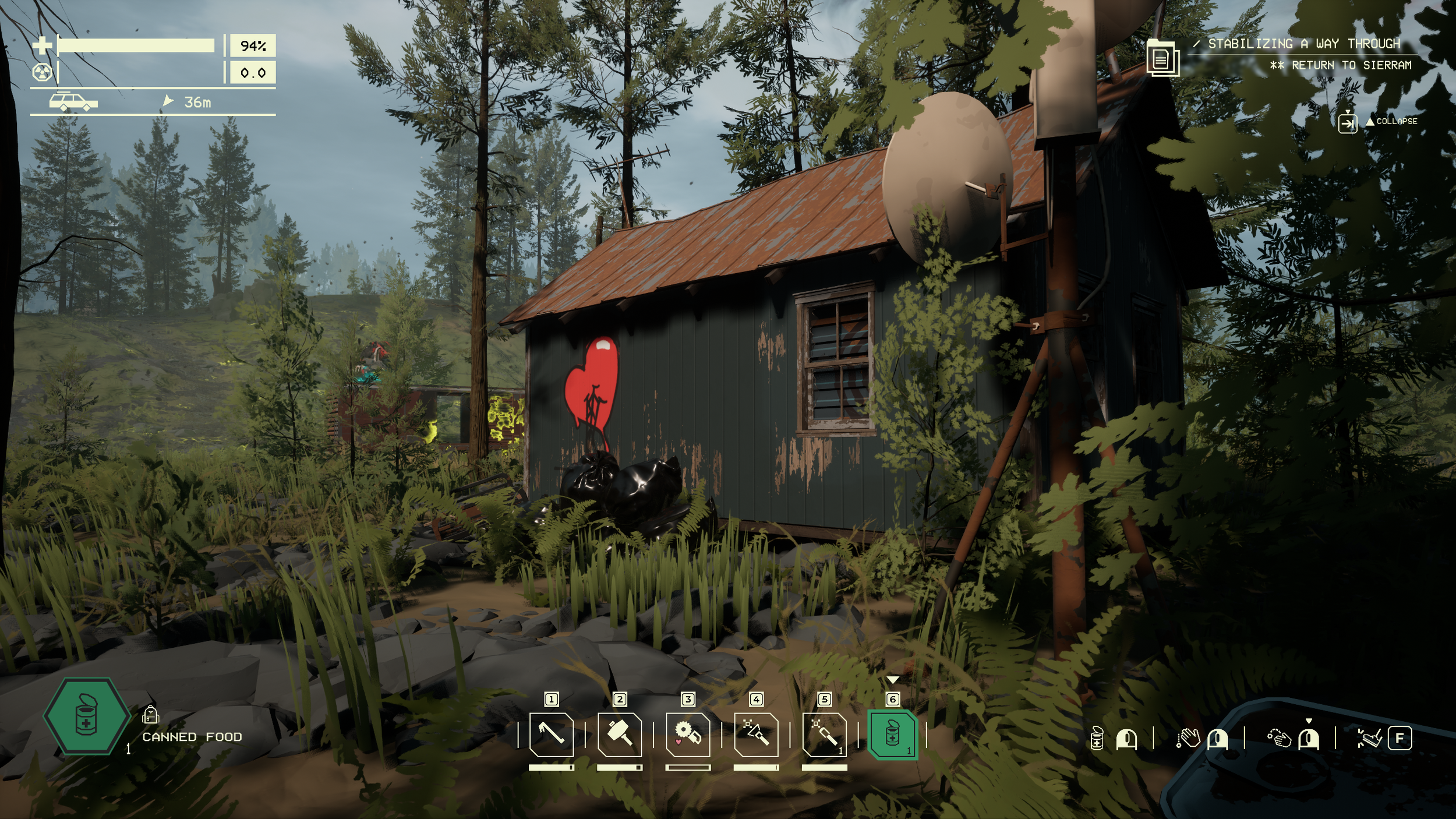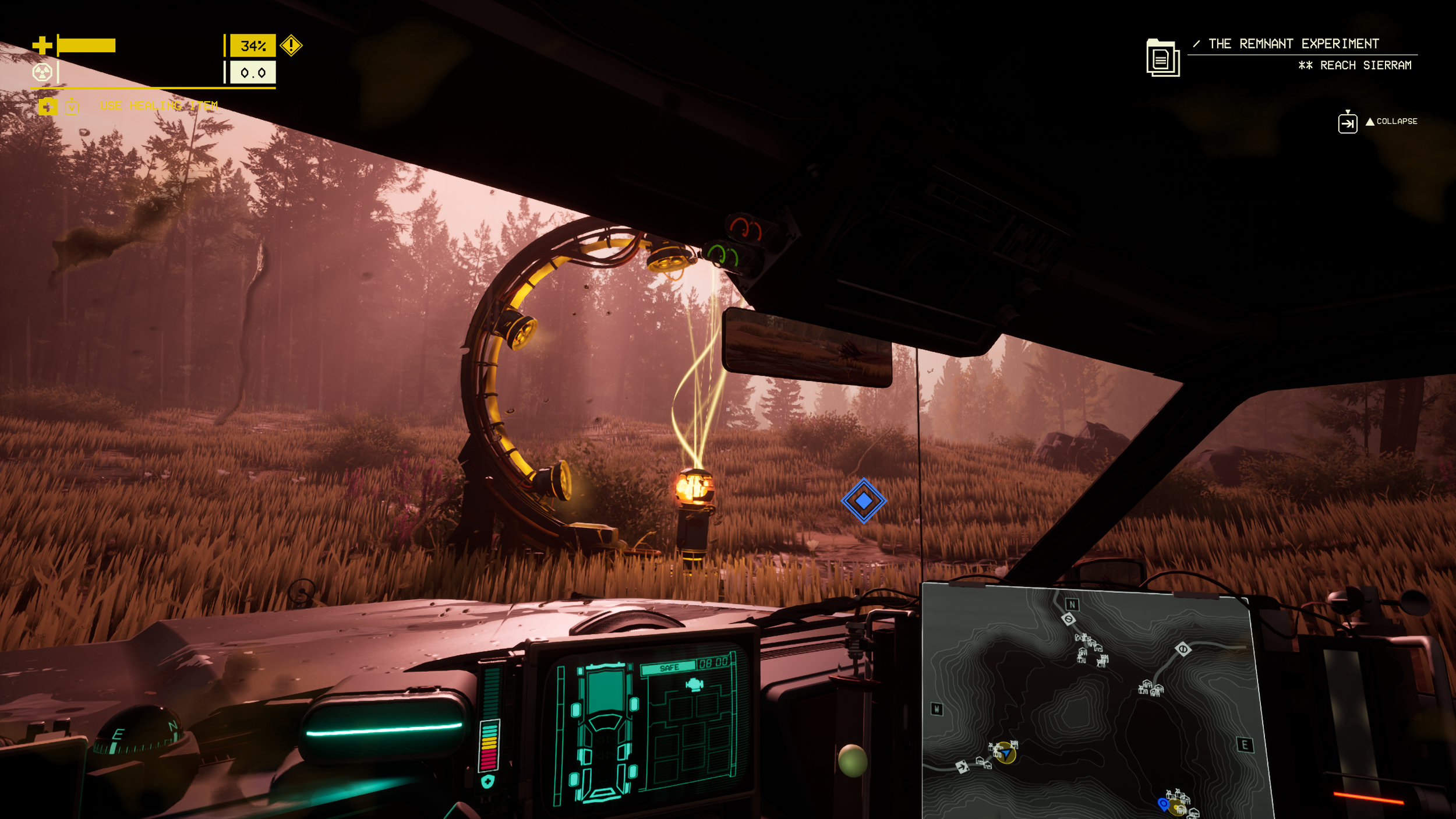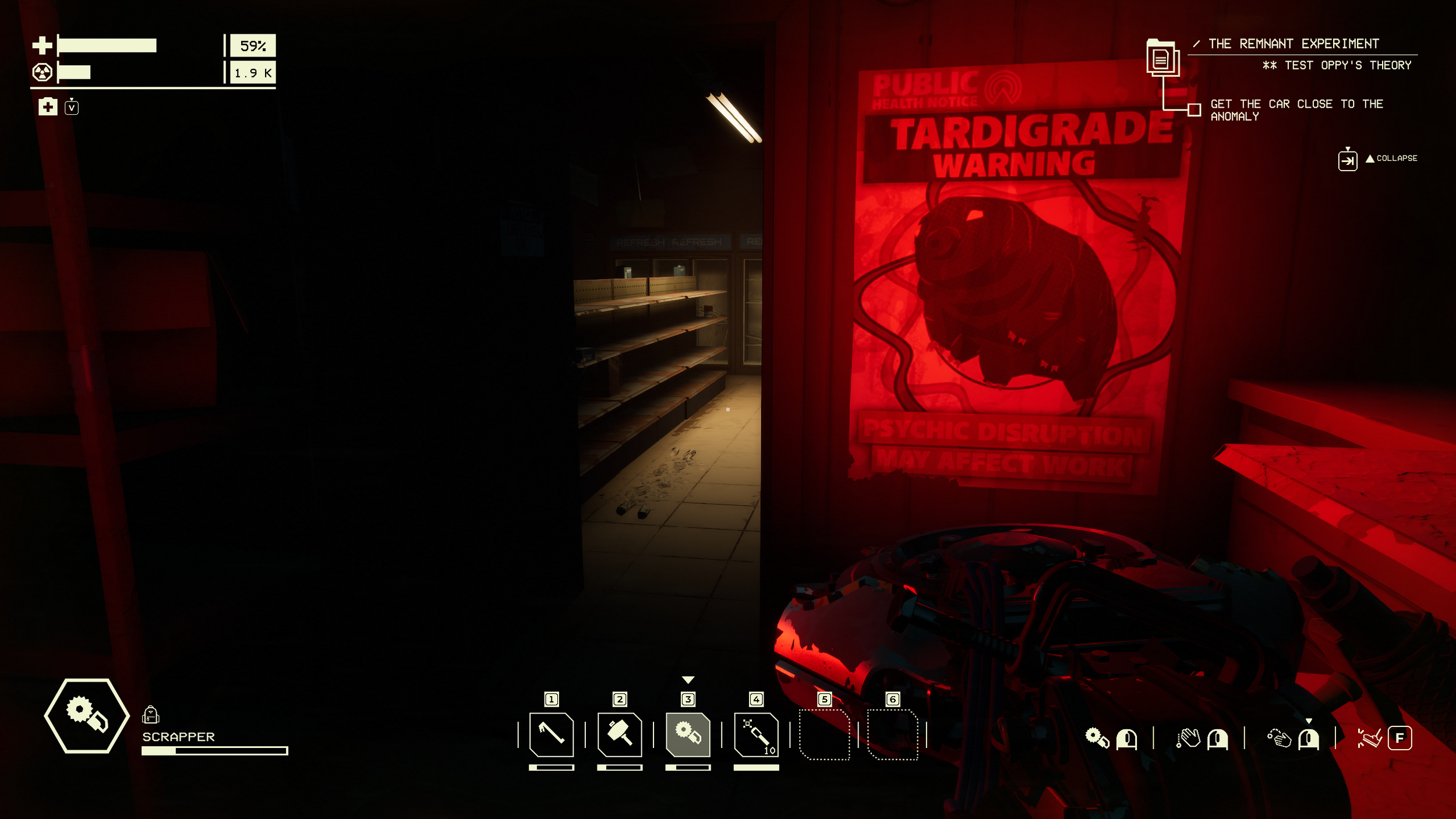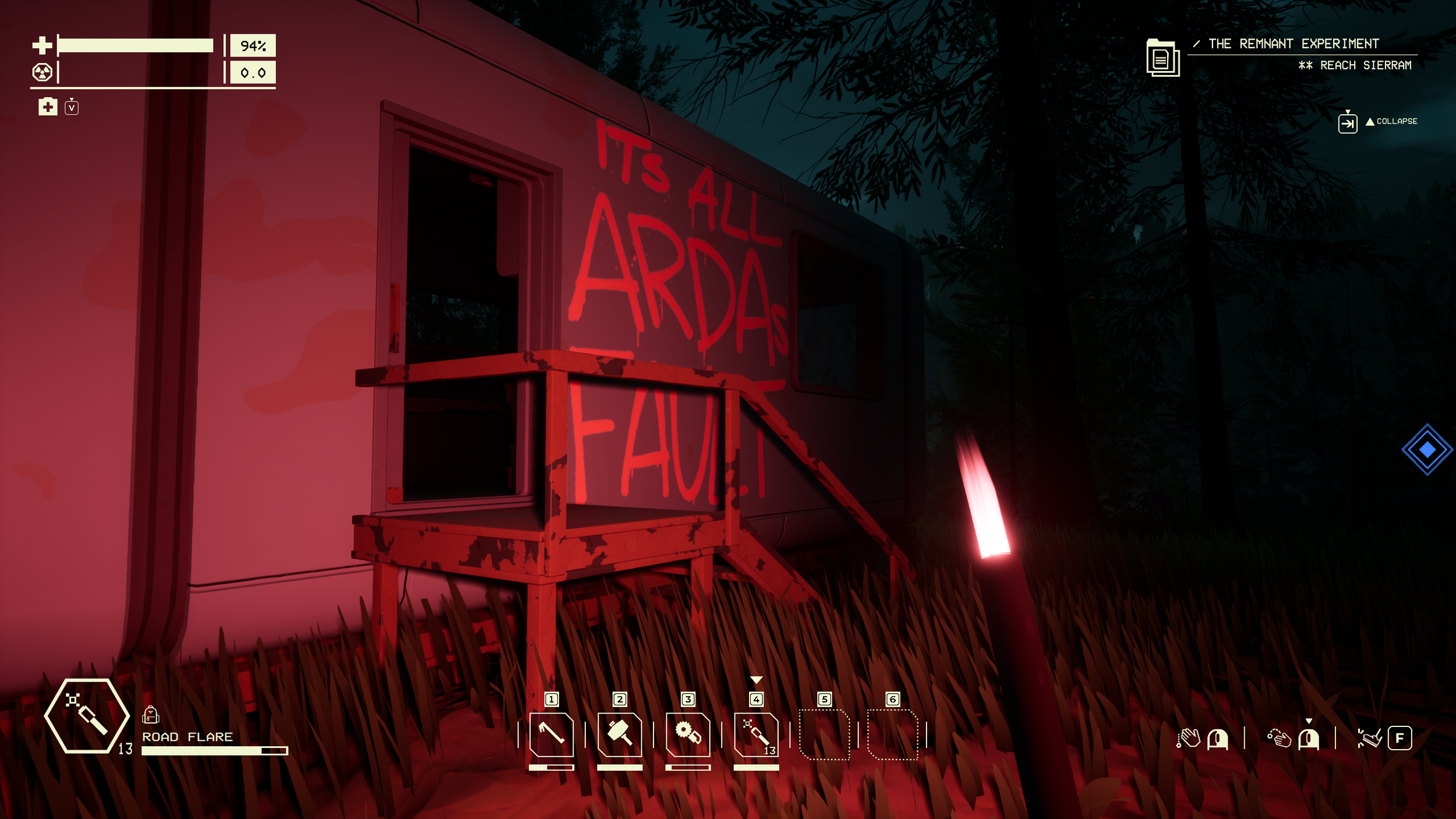There is just something about the Pacific Northwest that invokes feelings of mystery and a feeling the landscape is shrouded in secrets. Maybe the hundreds of times I watched The Goonies as a kid imprinted some kind of subliminal messaging on my brain. It's not just the big screen that has helped create this wonderful tapestry of inscrutable treelines. Shows like X-Files, Twin Peaks and even Gravity Falls are soaked in Pacific Northwest ambience. It makes sense that game developers also use these places as a backdrop to their creepy stories.
So this will be a spoiler-free review as always, but even covering some of the game's core mechanics could dampen the surprise: so if you are just looking for a recommendation then you got it. Buckle up and stow your snacks, because this road trip is gonna test your metal.
Beyond Cascadia
You start out, seemingly as some sort of delivery driver. Fresh off the ferry, the game begins to feed you prompts on the driving controls as you wind your way through the sun-dappled forest roads. Pretty soon you see a gigantic structure ahead that forms the border wall of the Pacific Exclusion Zone. After getting diverted down a side road and seeing some visual anomalies you are suddenly sucked into a ball of red energy only to appear on the other side. With the pieces of your van (hope it's not a rental) now suspended in the air around you and green energy all over the floor: something has clearly gone awry.
You make your way on foot, avoiding the luminous puddles like any seasoned gamer will know to do, learning how to kick down a barrier and crouch under a rock formation blocking your path. On entering a clearing it is here you find your mighty steed: a 1980s Station Wagon.
Radio Ga Ga
As well as dark pine forests, rickety water towers and driftwood-strewn coastline, there are other ingredients that can ratchet up the suspense factor. Like the wonderful Oxenfree, I love it when films and games implement old radios into the fold. Using HAM or CB radios, as the kids in Stranger Things do, harkens back to a time before smartphones and to an era of the burgeoning technological revolution. In a gaming sense, Oxenfree used radio transmissions as a core mechanic and a tool to enhance aspects of the horror. I guess there's just something retro and mysterious about distant voices in the static.
Tucked away in a dilapidated shed you find this sorry-looking vehicle which is even missing a front wheel. Yet this is your path forward and there's also the matter of voices emanating from inside. You reattach the wheel and get introduced to Tobias and Francis who seem to know a hell of a lot more about your predicament than you do. The skinny is that most of the zone has become swathed in ‘instability’ as a result of government experiments gone wrong. Instability is an ever-shifting storm that alters matter on an atomic level: not somewhere you want to be caught having your lunch.
As our good friend Gordon Freeman showed us, you don't need a voice to have a strong screen presence. Here we also see that the body you inhabit doesn't emit any sounds and it is left to the other characters in the game to fill in this dearth of communication. Unperturbed by the lack of response to their attempts at communication, they will continue talking among themselves while also feeding you information. Indeed, your character doesn't even display hands when using items or driving. While this can make you feel a little disembodied, it must also have saved the developers a lot of time and headaches animating hand movements for all the objects in the game. I also kinda like it.
Ma Swamp!
Your two new friends guide you to an abandoned workshop which is where you encounter another voice on the radio, that of Oppy who is the owner of your new refuge. Oppy comes across as prickly but at the same time gets you set up while guiding you through the various systems you will need to utilise. This workshop/garage is in one of the few safe zones where the instability can't reach and thus is your port in the storm, so to speak. It already has a source of fuel, a charging plate and a full mapping system for you to plan your trips into the zone. After each run, you will (hopefully) make it back here in one piece with the spoils of your rumagings.
While out in the zone, you must scavenge resources from buildings, cars and whatever else isn't nailed down. Some buildings will require you to use a crowbar to break a lock or maybe an electrical kit to bypass a keypad. You can also use a scraping tool to break a whole manner of items down from car parts and even old electrical equipment. One of the other key mechanics to be aware of is the anchor system. You must collect these orbs of energy in order to power up the (NAME) and allow you to portal back to your home base. You can gather the bare minimum to activate this travel system or take a bigger risk and get it all. More is better because the excess energy is used to craft new blueprints on the fabricator. The rub is that the more energy you collect, the quicker the zone will start collapsing around you. Once you power up the device a pillar of energy appears and you must reach it before the instability turns you to mushy peas. This mad dash for the exit is exhilarating and also very stressful if the zone manages to hamstring you.
As well as upgrades to your car there are also numerous upgrades you can unlock for the garage. These can be anything from a more powerful antenna to scan farther into the zone, to a device that breaks down your superfluous inventory into their base materials. You can even fit a fish tank to make your temporary digs seem more like home. Don't forget that this place isn't like the world outside and some objects will have hidden properties. The dumpster outside, for example, will spit out random resources if you give it a poke. I would also love it if we could close the garage door as I do feel very exposed when working on my ride!
It has to be said that the interface and related systems are some of the best I've ever seen in a survival game. On first arriving at the garage you acquire a pair of goggles that act as your HUD and make Google Glass like a kids toy. Scanning things is a vital part of uncovering new information and unlocking new blueprints. Just by scanning one of your wheels, for example, you get a readout of all four and what state they are in. The information panel on the wall also has this cool retro look with bright backlit blocks of colour making up the information you need. Very quickly you can discern what parts of the car need attention, which need replacing and what the fuel/battery situation is.
Christeen
The station wagon is an unmistakable icon of life in American 80's suburbia thanks to films like National Lampoon or The Wonder Years. These cars were popular due to them having plenty of room for dad's tools and the kids at the weekend. I love stories that take items we know and give them another purpose entirely, like Doctor Who's telephone box or the Dalorian time machine. Very soon it becomes clear that while looking like it could fall to pieces at any given moment, your borrowed ride is a whole lot more than just a car.
The retro look of the garage also follows you into the car itself with a whole manner of gauges and dials feeding the player information. Many of these have an improvised, home-built aesthetic with tech I remember seeing when growing up in the 80’s. When you turn the ignition and the car's interior flickers to life it feels good. Your car is a shield, quite literally in this case, protecting you from the dangers of the outside world and this game really does elicit that feeling of safety. Often a radioactive squall will engulf the area you are in and these storms are both impressive and intimidating. Powerlines sway wildly, trees bend and debris fills the horizon. The strong winds buffet the car so much that even with the brakes on it will be pushed around. As long as the integrity of your car holds, you are protected within its warm interior.
As you progress through the various locations and unlock new technologies this run-down shell of a car will start to resemble a science lab on wheels. New protective panelling, luggage racks sporting defensive equipment MacGyvered together from old computer parts: this is your fortress and you are its king. As new parts of the garage come online you will gain the ability to change the aesthetics of the car such as the steering wheel and panelling decals etc. Given the bond you will develop with this car, being able to put your own personal stamp on it is a great feature.
Another system that feeds the notion this car is almost alive is the quirks system. After each run your ride might start doing something odd, like the horn sounding every time you close a door for example. You can use the tinker station to punch information in and diagnose what the fix is. These quirks can be minor to your car actually driving off without you (or at you).
Is it PC?
The graphics on show here are another example of style being more important than a checklist of modern graphical features. The Unreal Engine 4 is getting on a bit now but it can still produce some gorgeous results. While texture work is nothing to write home about the stylistic way the game builds objects looks great and is packed with character. It is, however, the superb use of lighting that elevates the game's many environments and creates an emotional rollercoaster. Like when the docile green light emanating from floating robots flips to deep red, you know you're in trouble. Or when smashing through deep forest towards the powerful pillar of light, knowing this is your only way home.
Each time you enter a new location there are many factors that decide what you can see, from time of day, local weather to any specific anomalies active at that time. Sometimes you will be enveloped in dense fog or corrosive rain. There could be an oppressive darkness that makes avoiding objects hit and miss. Changes in the weather don't always spell disaster as you can harness wind, rain and even lightning to charge your ever-depleting battery. This procedural aspect of each run is a staple of the rogue-lite genre and helps keep things fresh as gathering can get a little tedious. However, even when you are a seasoned survivor in this world, the game has so many ways to keep you on your toes. The tourists, for example, are seemingly lifeless manikins that you happen across, just don't take your eye off them for too long!
The sound design is another triumph of Pacific Drive. The direct sound effects are all well recorded, such as a car door slamming shut or your engine sputtering into life. The spatial acoustics are superb and there is no better example of this than when you move from inside the car to outside. Then you have the more elemental sounds such as the gravel under tyres or the patter of rain dancing on the metallic roof of the car. The team clearly did a lot of work here to make the sounds authentic which obviously ratchets up that immersion. There are also some sound effects we don't have first-hand experience of such as how the many anomalies sound or the haunting distant horn when an area starts to collapse.
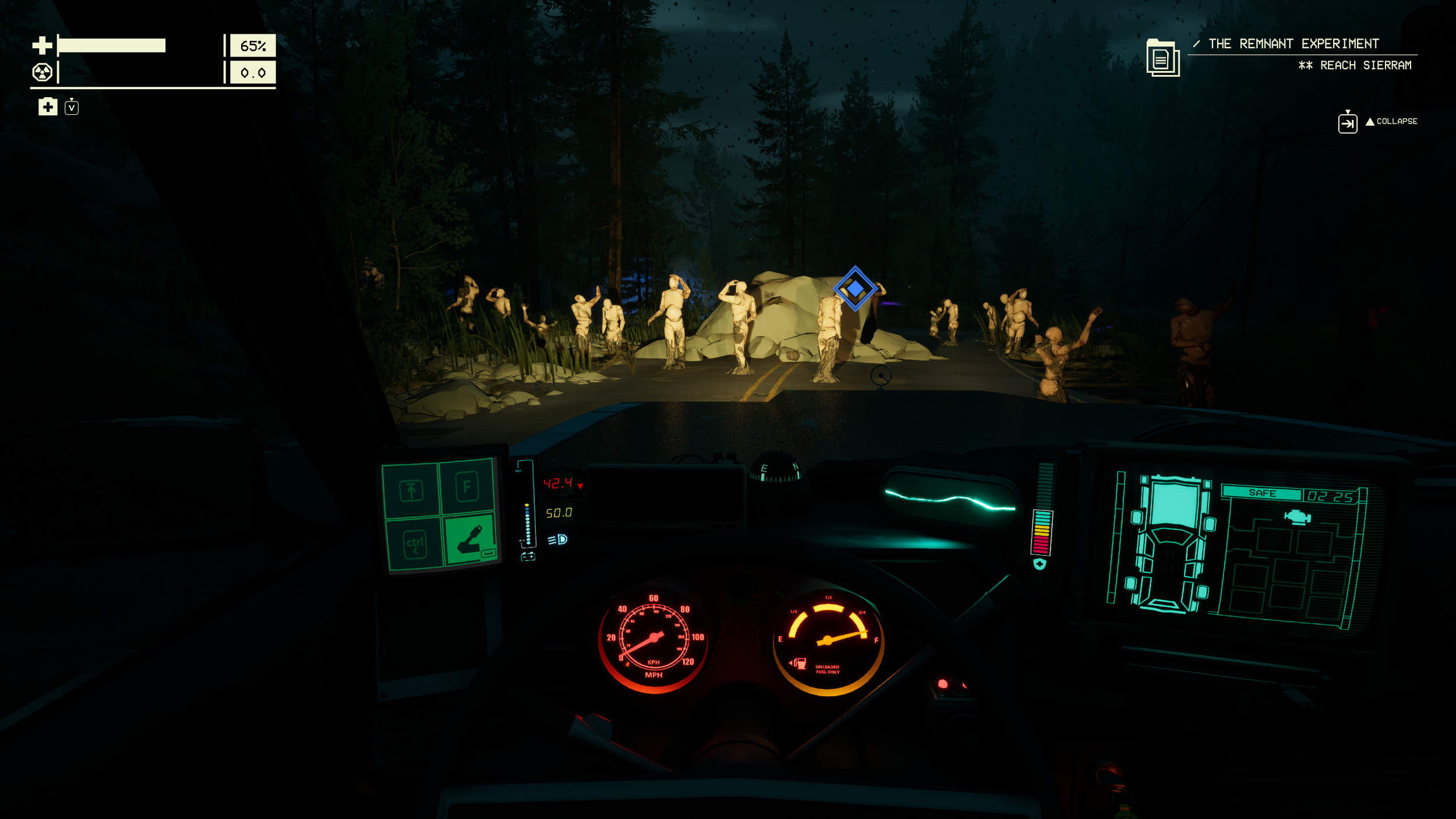
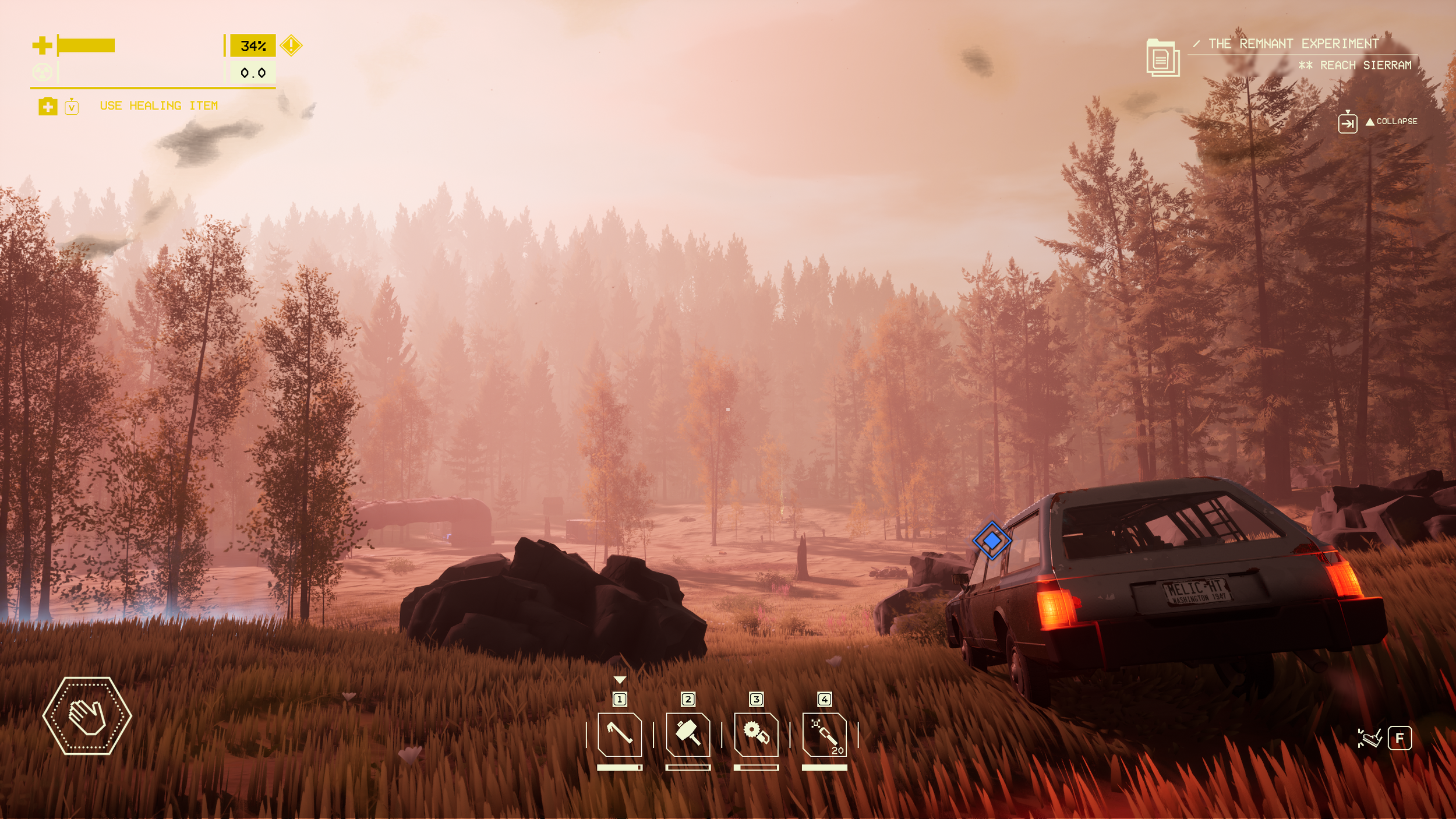
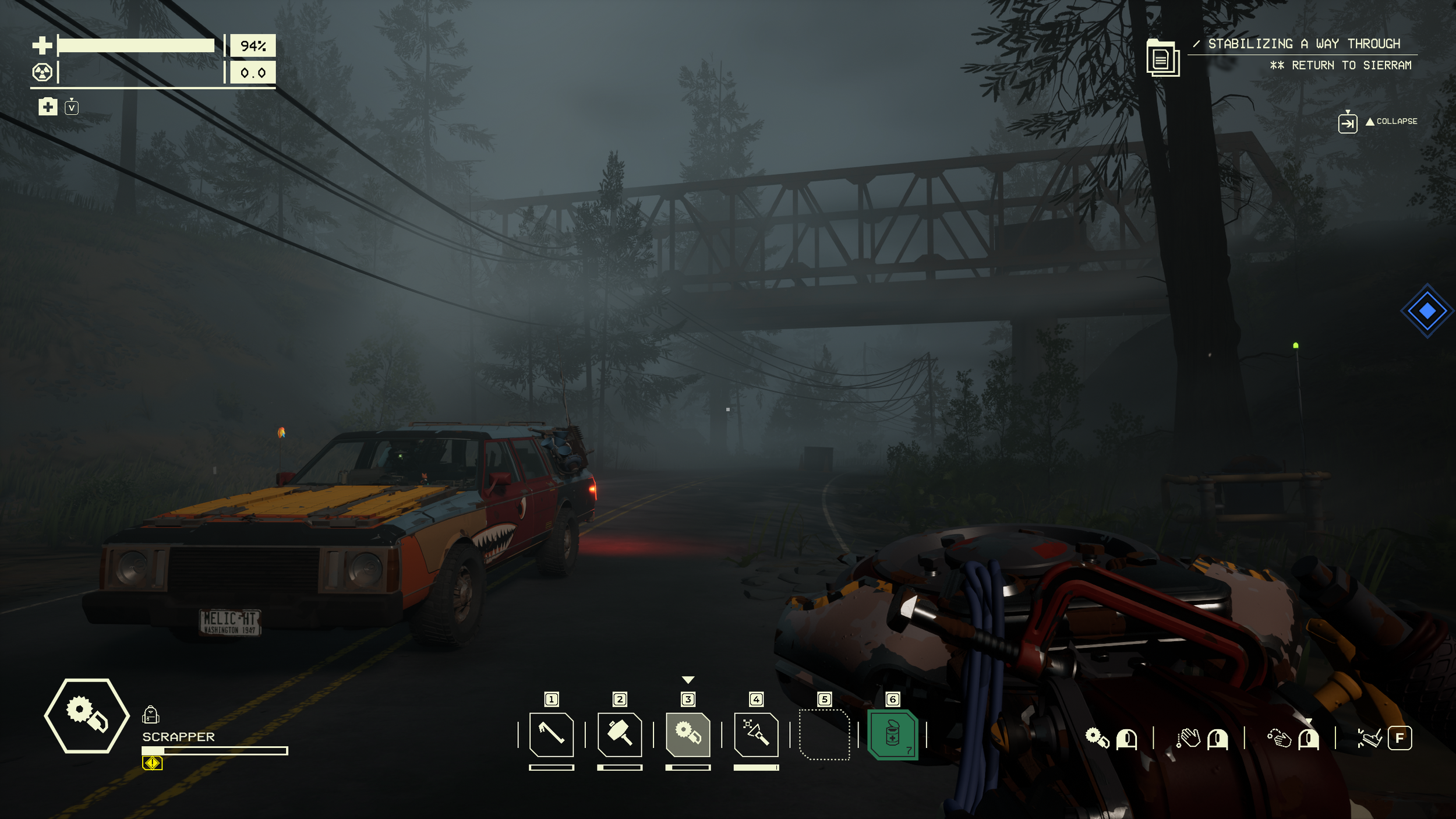
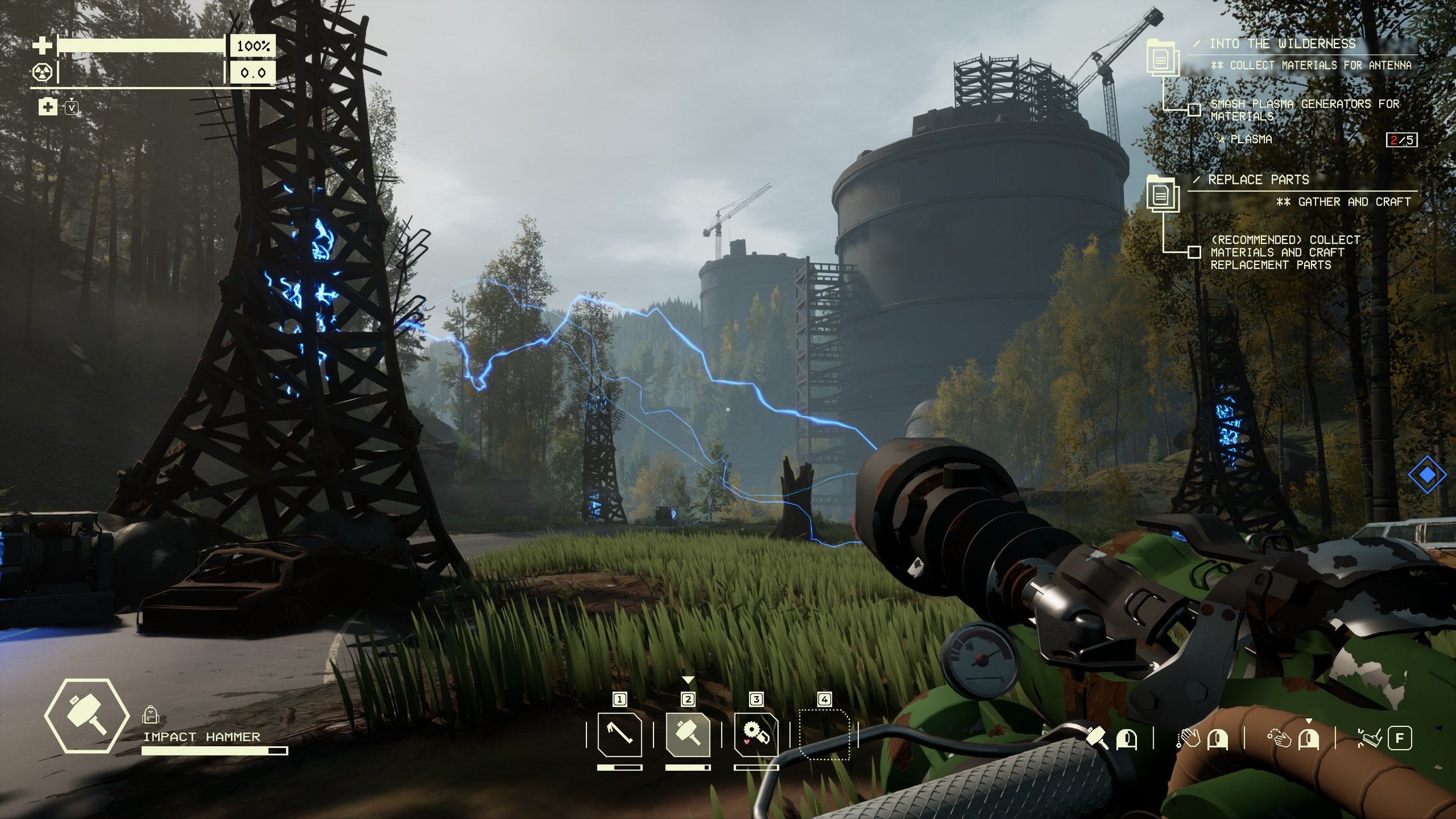
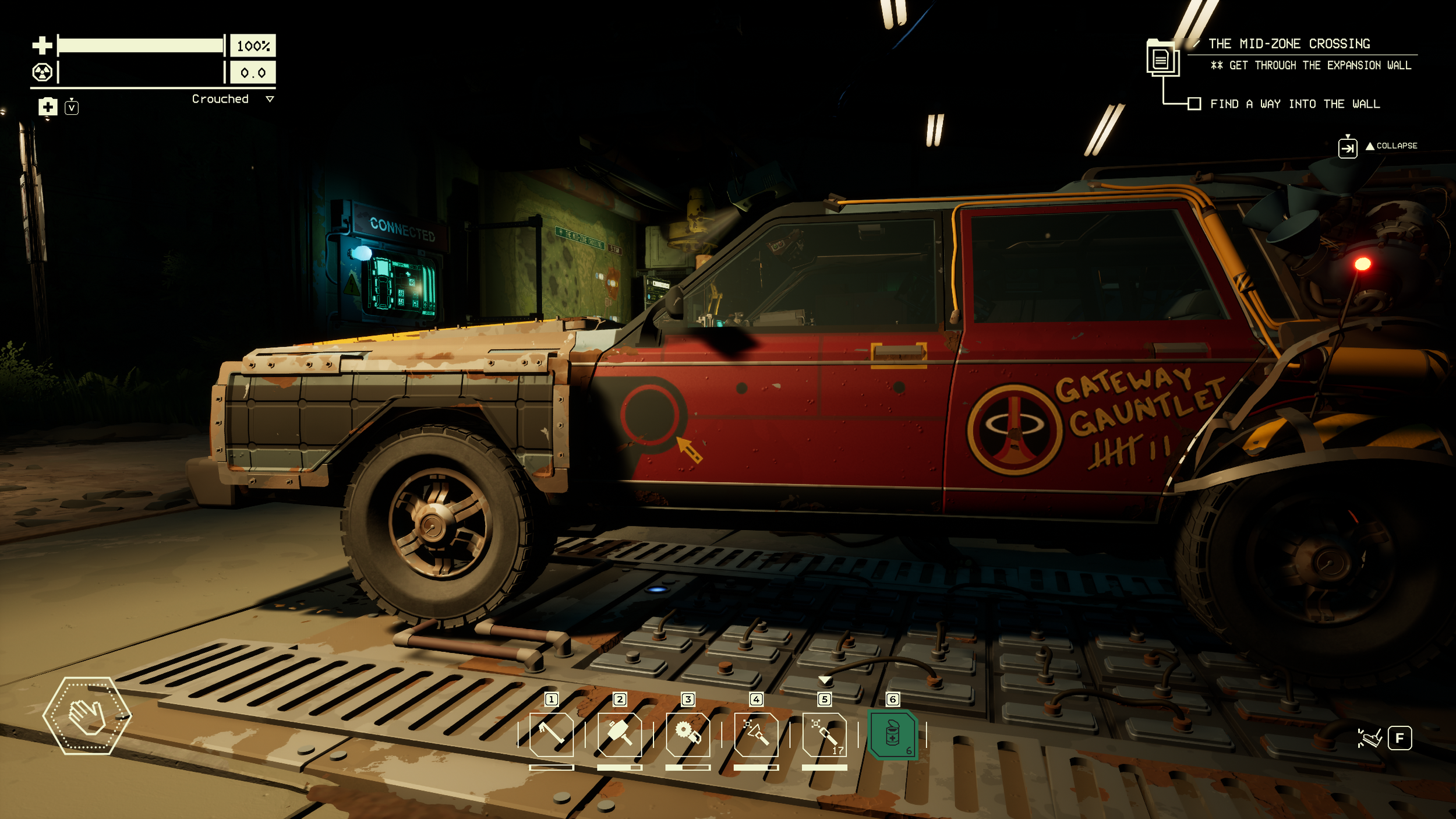
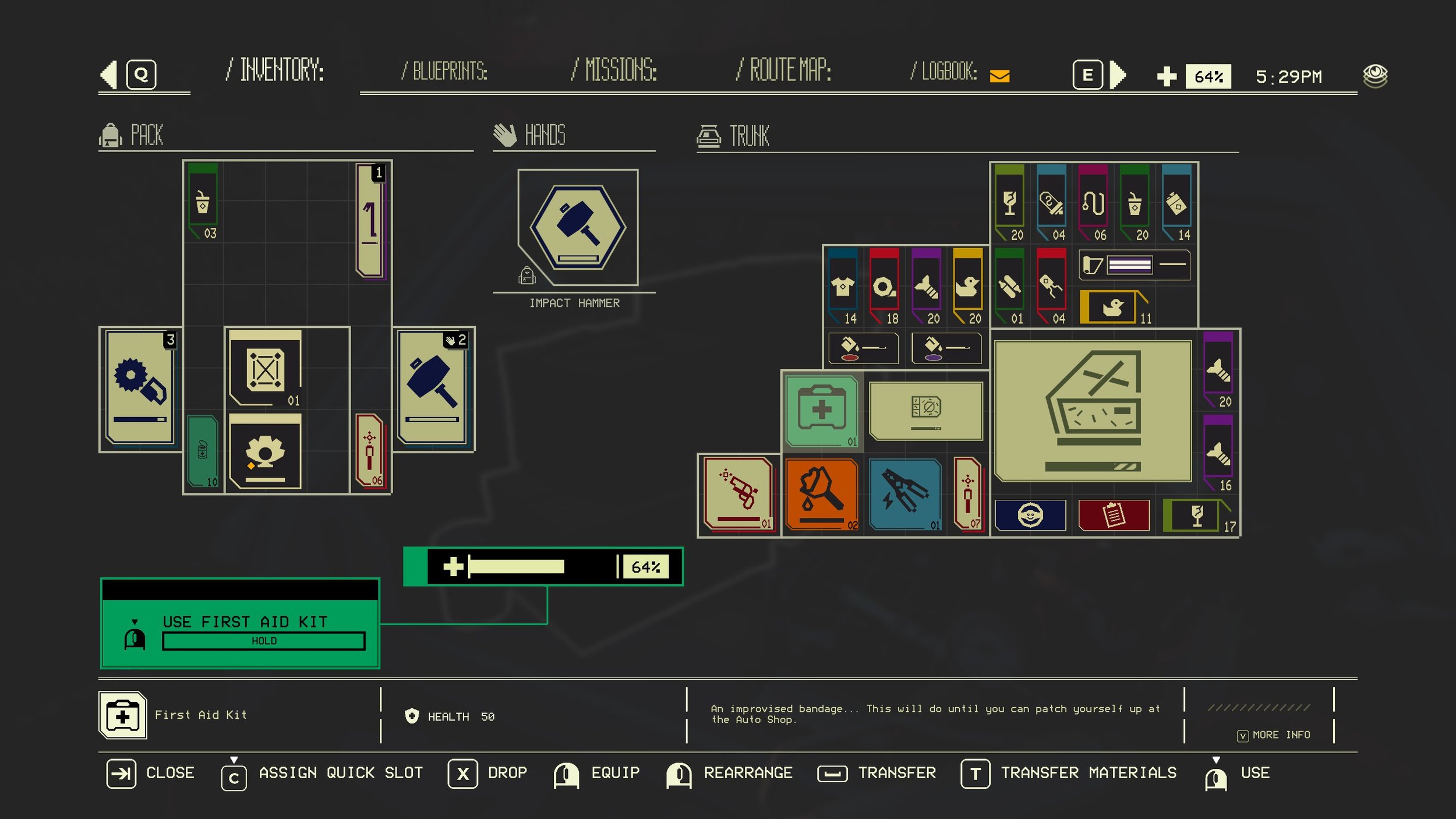
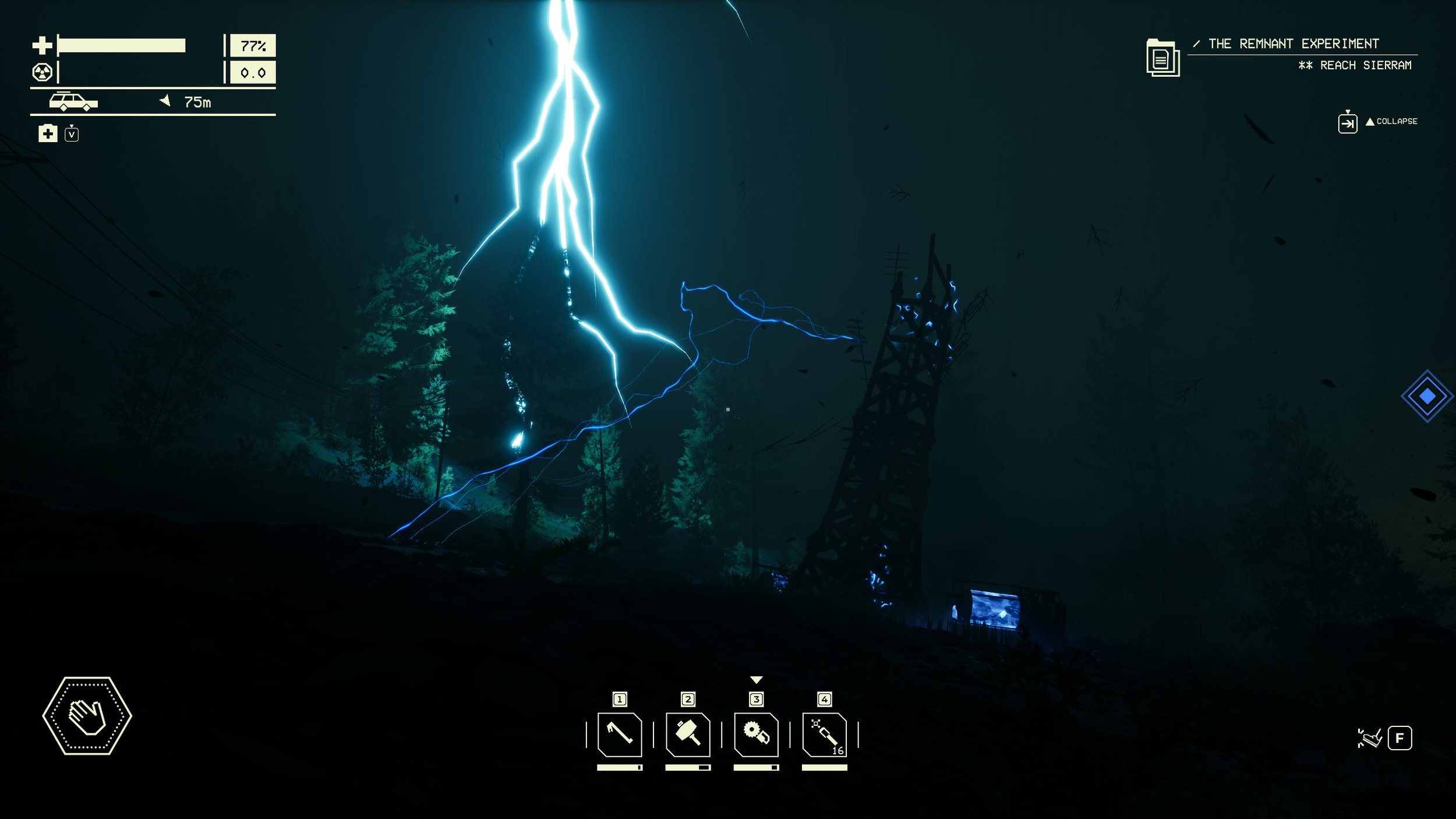
Then we move on to the music which we can file under two groups, the in-game music and the tracks that play on the in-game radio: both are excellent. You can flip the radio on in the workshop or the car, although the car radio will put a drain on the battery. With fifteen tracks there is enough to keep you entertained but I didn't always have it on in the field as I wanted to listen to the sounds of the environment. Like all good mechanics, I always have the radio on while tinkering in the garage.
The final piece of the puzzle is the voice acting and by jove this is also fantastic. Tobias, Francis and Oppy all have very different personalities which makes conversations all the more tense. Each line of dialogue is well delivered and adds something, either to develop the story or just in terms of pure entertainment. Pacing has also been handled with a deft touch, with dialogue coming just at the right moments and this helps break up the longer runs. The game also does a smart thing and offers you more information if you wish to spend the time gathering it, such as lost voice recordings out in the zone or random messages on the fax machine.
Conclusion
The world is currently suffering huge financial issues and the cost of everything seems to be spiralling ever upwards. The games industry weathered Covid pretty well but it does seem now this wave of burden is finally washing upon our shores. With developers everywhere having to lay off staff or shutting their doors entirely, the bean counters are tightening their belts. In this environment, bigger companies and publishers will always back the lowest-risk projects, which makes games like Pacific Drive all the more special.
This game is unique and the developers have dared to make something that stands out rather than following well-trodden conventions. For this I applaud them and I truly hope their bravery translates into sales. If you like survival games or titles that offer something you've not seen before this is a must. It is a gorgeous game in so many respects and has the gameplay chops to back this up. Pacific Drive is currently my favourite game of 2024 and so is certainly in the running for game of the year.


